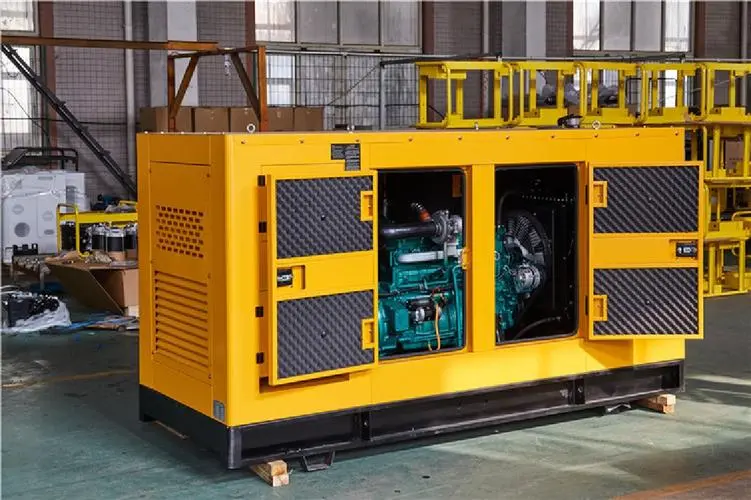Diesel Generators for Synchronization with the Grid A Comprehensive Guide
Introduction Diesel generators have long been a reliable source of backup power for various industries and applications. With the increasing demand for electricity and the growing need for reliable power supply, the integration of diesel generators with the grid has become a popular solution to ensure continuous power supply. In https://www.lkpowerplant.com/60kw-150kw/ , we will explore the concept of synchronizing diesel generators with the grid, the benefits of this synchronization, the challenges involved, and the best practices for successful integration. Understanding Diesel Generators Diesel generators are a type of internal combustion engine that converts diesel fuel into mechanical energy. This mechanical energy is then converted into electrical energy through an alternator. Diesel generators are widely used for backup power in critical facilities such as hospitals, data centers, and industrial plants due to their reliability, efficiency, and durability. Synchronization with the Grid Synchronizing a diesel generator with the grid involves connecting the generator to the utility grid and ensuring that the two power sources are operating in parallel. This allows the generator to supply power to the grid when needed and receive power from the grid when the load exceeds the generator's capacity. Synchronization is essential to maintain the stability and reliability of the grid and prevent power outages. Benefits of Synchronization There are several benefits to synchronizing diesel generators with the grid. One of the main advantages is increased reliability and redundancy in the power supply system. By connecting multiple generators to the grid, the system can continue to operate even if one generator fails. Synchronization also allows for more efficient use of resources by enabling generators to share the load based on demand. Additionally, synchronized generators can provide ancillary services such as frequency regulation and voltage support to the grid, enhancing its stability and resilience. Challenges of Synchronization While synchronization offers many benefits, there are also challenges involved in integrating diesel generators with the grid. One of the main challenges is ensuring proper synchronization to avoid voltage and frequency mismatches between the generator and the grid. Improper synchronization can lead to power quality issues, equipment damage, and even grid instability. Another challenge is coordinating the operation of multiple generators to maintain a balanced and stable power supply system. Effective communication and control systems are essential to address these challenges and ensure the successful integration of diesel generators with the grid. Best Practices for Integration To ensure the successful synchronization of diesel generators with the grid, it is important to follow best practices and guidelines. One of the key considerations is selecting the right size and type of generator based on the load requirements and grid conditions. Proper installation and commissioning of the generator are also critical to ensure reliable and safe operation. Regular maintenance and testing of the generator and synchronization system are essential to identify and address any issues before they cause disruptions to the power supply. Additionally, training operators and maintenance personnel on proper synchronization procedures and emergency protocols can help prevent accidents and ensure the smooth operation of the system. Case Studies To illustrate the real-world application of diesel generators for synchronization with the grid, we will present two case studies showcasing successful integration projects. Case Study 1: Data Center Synchronization A large data center in a metropolitan area experienced frequent power outages due to grid instability and high demand. To improve the reliability of its power supply, the data center installed multiple diesel generators synchronized with the grid. The generators were equipped with advanced control systems that allowed for seamless synchronization and load-sharing. As a result, the data center was able to maintain uninterrupted operation during grid outages and peak demand periods, ensuring the continuity of its critical services. Case Study 2: Industrial Plant Synchronization An industrial plant in a remote location relied on diesel generators as its primary source of power due to the lack of access to the utility grid. To reduce fuel consumption and operating costs, the plant implemented a synchronization system that enabled it to connect to the grid during off-peak hours and receive power from the grid when available. This hybrid power system allowed the plant to optimize its energy usage and reduce its reliance on diesel fuel, resulting in significant cost savings and environmental benefits.  Conclusion The integration of diesel generators with the grid offers a reliable and cost-effective solution to ensure continuous power supply and improve the stability of the electrical grid. By synchronizing generators with the grid, industries and facilities can enhance their resilience to power outages, optimize their energy usage, and contribute to a more sustainable energy system. However, successful synchronization requires careful planning, proper equipment selection, and ongoing maintenance to ensure safe and efficient operation. By following best practices and learning from successful case studies, organizations can leverage the benefits of diesel generators for synchronization with the grid and enhance their overall power supply system.
Conclusion The integration of diesel generators with the grid offers a reliable and cost-effective solution to ensure continuous power supply and improve the stability of the electrical grid. By synchronizing generators with the grid, industries and facilities can enhance their resilience to power outages, optimize their energy usage, and contribute to a more sustainable energy system. However, successful synchronization requires careful planning, proper equipment selection, and ongoing maintenance to ensure safe and efficient operation. By following best practices and learning from successful case studies, organizations can leverage the benefits of diesel generators for synchronization with the grid and enhance their overall power supply system.